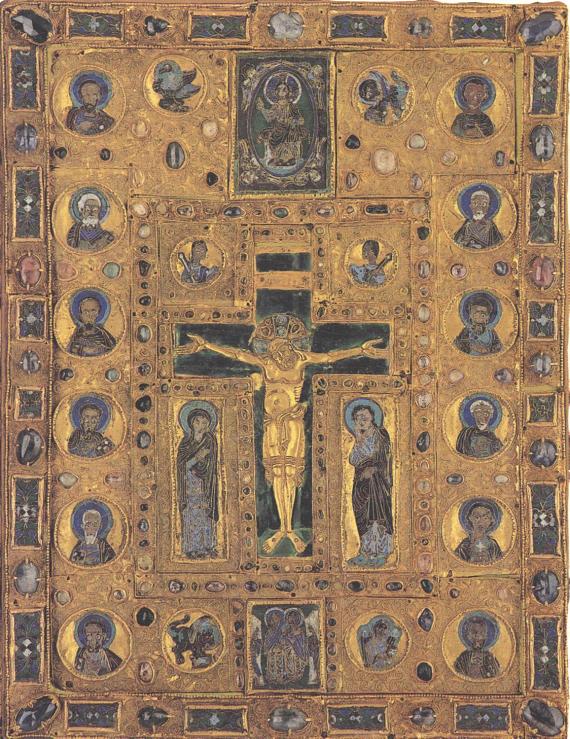Dictionary


Fore-edge painting
Fore-edge-painting refers to a form of representation on the edges of the leaves of a book, which only shows when the book is closed or, in England, when a representation is painted on the fore-edge, the outer edge of a book parallel to the spine, when it is fanned out. Fore-edge painting has been known since the Middle Ages. In 17th-century England, the technique of fore-edge painting experienced an early flowering and was perfected in the latter half of the 18th century by William Edwards (of Halifax). In fore-edge painting of this kind, a narrow strip, at most one millimetre wide, is painted with a landscape or architecture scene so that the motif only shows when the page is fanned out; when the book is closed straight, the painting disappears beneath a layer of gilding or marbling on the edges. A special form of fore-edge painting is decorating the edges with two different pictures, each of which becomes visible depending to which side the page is fanned out.
Fore-edge-painting refers to a form of representation on the edges of the leaves of a book, which only shows when the book is closed or, in England, when a representation is painted on the fore-edge, the outer edge of a book parallel to the spine, when it is fanned out. Fore-edge painting has been known since the Middle Ages. In 17th-century England, the technique of fore-edge painting experienced an early flowering and was perfected in the latter half of the 18th century by William Edwards (of Halifax). In fore-edge painting of this kind, a narrow strip, at most one millimetre wide, is painted with a landscape or architecture scene so that the motif only shows when the page is fanned out; when the book is closed straight, the painting disappears beneath a layer of gilding or marbling on the edges. A special form of fore-edge painting is decorating the edges with two different pictures, each of which becomes visible depending to which side the page is fanned out.
Offers for Bibliophilia
Headquarters
Joseph-Wild-Str. 18
81829 Munich
Phone: +49 89 55 244-0
Fax: +49 89 55 244-177
info@kettererkunst.de
Louisa von Saucken / Undine Schleifer
Holstenwall 5
20355 Hamburg
Phone: +49 40 37 49 61-0
Fax: +49 40 37 49 61-66
infohamburg@kettererkunst.de
Dr. Simone Wiechers / Nane Schlage
Fasanenstr. 70
10719 Berlin
Phone: +49 30 88 67 53-63
Fax: +49 30 88 67 56-43
infoberlin@kettererkunst.de
Cordula Lichtenberg
Gertrudenstraße 24-28
50667 Cologne
Phone: +49 221 510 908-15
infokoeln@kettererkunst.de
Hessen
Rhineland-Palatinate
Miriam Heß
Phone: +49 62 21 58 80-038
Fax: +49 62 21 58 80-595
infoheidelberg@kettererkunst.de
We will inform you in time.




